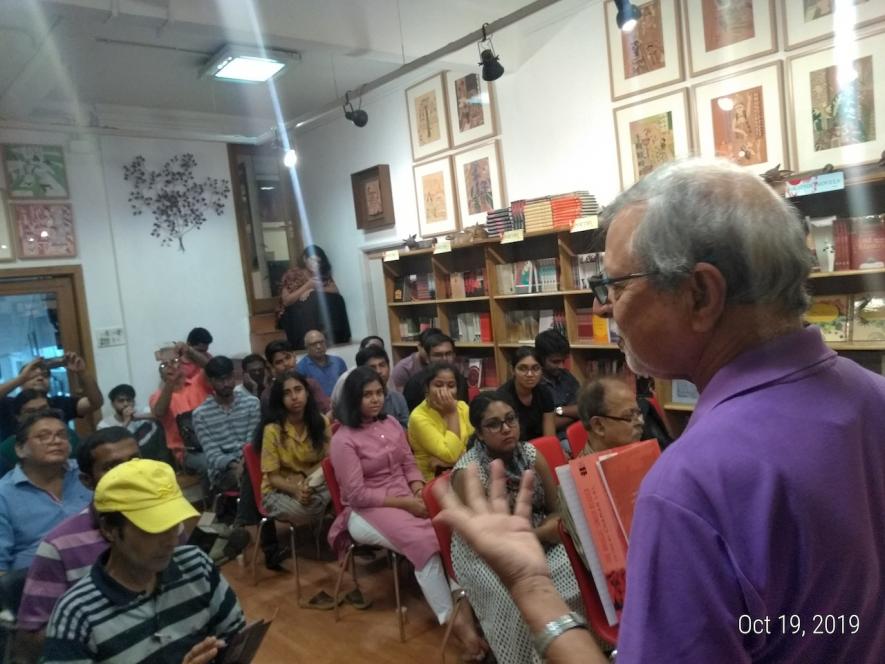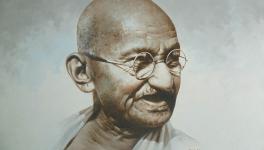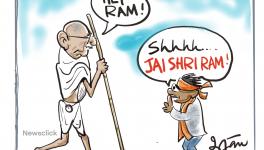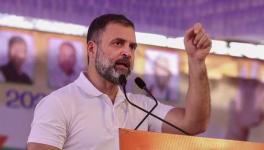Fearlessness of Bhagat Singh Needed to Fight Fascist Build-Up: Chaman Lal

Kolkata: There is a marked difference in the India envisaged by Bhagat Singh, who was inspired by Marxism, than that of Hindutva icon, VD Savarkar (who admired Hitler), said Prof Chaman Lal, an educationist and Bhagat Singh’s biographer.
Speaking at the Seagull Bookstore here recently, the professor said it was of utmost importance to inculcate the fearlessness of Bhagat Singh and his fellow freedom fighters, such as Jatin Das and Batukeshwar Dutta, in present situation when a saffron build-up was trying to choke up the very Constitution of India and the concept of a nation “that these brave men fought for, at the cost of their lives”
Describing Shaheed-e-Azam Bhagat Singh as a “pathbreaking revolutionary on a Marxist path “, Chaman Lal also called for more study on the life of the revolutionary across the country. He said the stories centred around Bhagat Singh were undoubtedly patriotic and secular but the current fascist build-up in the country was trying to promote him by subverting his hallmark -- rationalism and scientific temper.
The professor, who has been associated with Punjab Central University and Jawaharlal Nehru University in Delhi, and was also jailed during the Emergency, was speaking at an event jointly hosted in Seagull Bookstore by Friends of Latin America and Left Word Books in association with Harper Collins, the publisher of a 682-page Bhagat Singh Reader, edited by Chaman Lal.
The professor said while Khalistanis and Rashtriya Swayamsevak Sangh had made continuous efforts to “appropriate” Bhagat Singhs’ legacy, the fact is that the martyr’s was a “revolutionary on a Marxist path.”
He cited that it was another Tamil visionary, Periyar, who popularised and published in Tamil, as early in 1934, Bhagat Singh’s essay “Why I am an Atheist “ after getting the permission and an English copy from Com P Jivanandan, a prominent communist leader.
The professor recalled that most of Bhagat Singh’s associates later drifted toward the communist movement, like Shiv Varma and Ajoy Ghosh, which was the “natural course of ideological maturity.” He highlighted that Bhagat Singh did deep study of Marxism in jail although his atheist outlook was formed when he reached the age of 19 in 1926.
The professor is known for his work on Bhagat Singh, of which some are with the Prof Jagmohan Singh, the martyr’s nephew.
In his address, Chaman Lal said though the Indian freedom struggle was enriched by the contribution of many valiant martyrs, Bhagat Singh’s greatness lay in the way he courted martyrdom, with no effort to escape. He wrote letters denouncing anarchy, cautioning his contemporaries that anarchy cannot bring freedom and that road lies in efficient build-up of mass organisations of working class, farmers and youth.
Even the shooting of British Police Officer, Sanders (for which he was hanged) to Bhagat Singh was not in the direction of anarchy but to hurt the ‘poster boy’ of British colonial power, who had beaten to death one of towering icons of freedom struggle, Lala Lajpat Rai, whose famous quote was “the blows struck at me will be the last nails in the coffin of the British rule in India”.
Get the latest reports & analysis with people's perspective on Protests, movements & deep analytical videos, discussions of the current affairs in your Telegram app. Subscribe to NewsClick's Telegram channel & get Real-Time updates on stories, as they get published on our website.
























